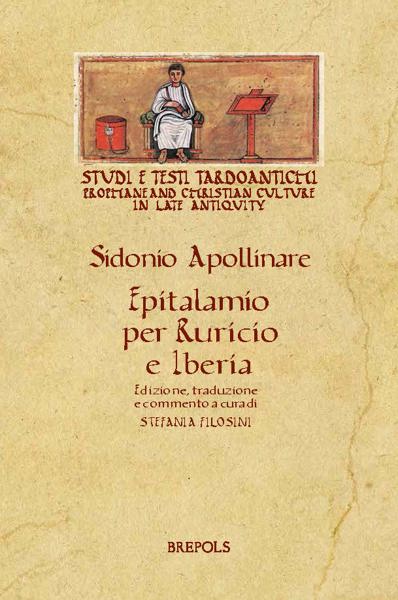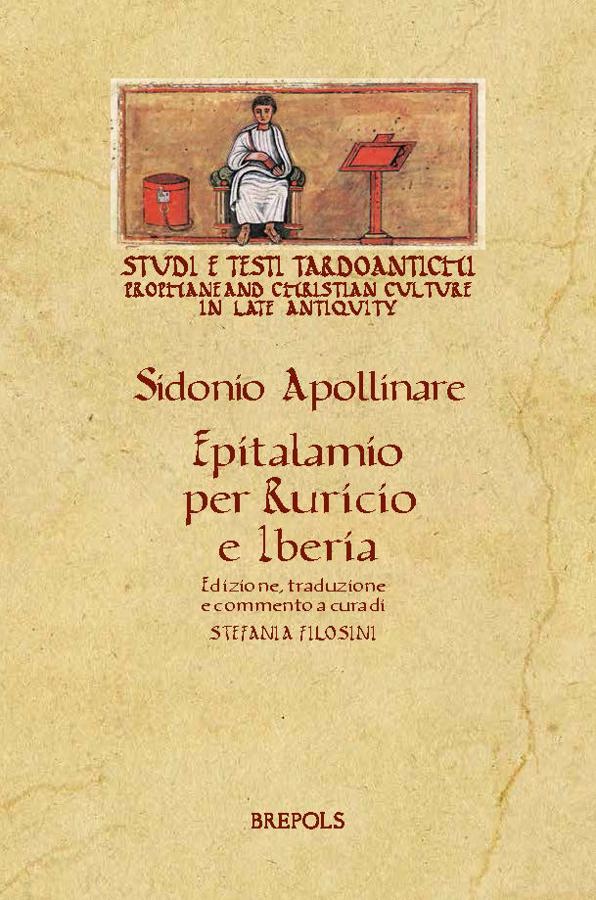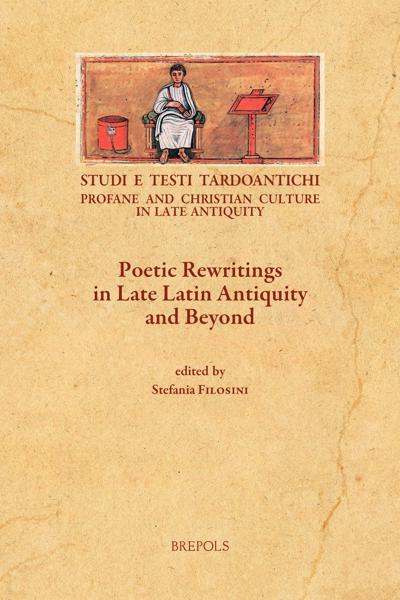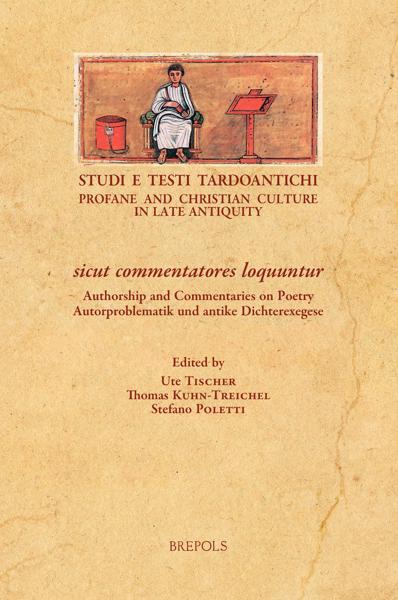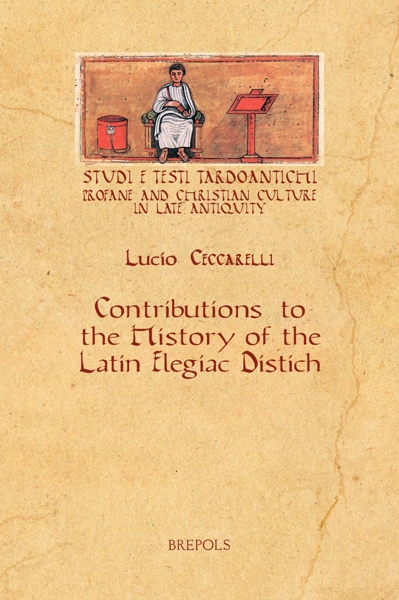
Sidonius Apollinaris
Sidonio Apollinare, Epitalamio per Ruricio e Iberia
Edizione, traduzione e commento a cura di Stefania Filosini
Stefania Filosini (ed)
- Pages: 279 p.
- Size:156 x 234 mm
- Illustrations:2 tables b/w.
- Language(s):Italian, English, Latin
- Publication Year:2014
- € 115,00 EXCL. VAT RETAIL PRICE
- ISBN: 978-2-503-55271-2
- Paperback
- Available
- € 115,00 EXCL. VAT RETAIL PRICE
- ISBN: 978-2-503-57318-2
- E-book
- Available
A critical edition, with translation and commentary, of Sidonius Apollinaris' wedding poem for his noble friends Ruricius and Hiberia
“Frutto dell’attenta revisione di una tesi di dottorato (…), questa edizione commentate dell’epitalamio per le nozze di Ruricio e Iberia colma una grave lacuna nel panora- ma degli studi sidoniani, mostrandosi pienamente in sintonia con l’attuale tendenza a riservare specifiche cure ecdotiche ed esegetiche a singoli testi dello scrittore galloromano.” (Marco Onorato, sul Bollettino di studi latini 46.1, 2016, p. 389)
“Overall, those interested in Sidonius' poetry and Latin epithalamia will find things of value peppered throughout this book. Filosini ably observes and analyzes Sidonius' skill and relationship with his predecessors, and a reader can certainly appreciate the ways in which this commentary is serviceable.” (Amy Oh, in Bryn Mawr Classical Review, 08.06.2016)
Stefania Filosini holds a degree in Classical Languages and Literatures as well as a PhD in 'Civiltà e tradizione greca e romana'. Her research focuses on late Latin poety. She is the author of a commentary on Paulinus of Nola's poems 10 and 11.
Sidonius Apollinaris, a Gallo-Roman aristocrat and gifted poet, composed an epithalamium in the mid-fifth century AD to celebrate the marriage of his noble friends, Ruricius and Hiberia. Sidonius would later become the bishop of Clermont-Ferrand, and Ruricius the bishop of Limoges. The poem (c. 11) and its preface (c. 10), in keeping with the profane models of Statius and Claudian, depict a world in which the preponderance of myth helps to keep reality from the forefront, and the sophisticated resources of a refined poet attempt to revive the formal perfection of Roman classics and values.
This volume provides a general introduction, a critical text with Italian translation, a detailed commentary of the poem and preface, and a summary in English. Stefania Filosini demonstrates Sidonius's important contribution to the literary tradition of Late Latin epithalamia, illustrates the poet's techniques, deals with numerous exegetic problems in both of the texts, and proposes new solutions to some of them.
Premessa
Introduzione
I. L'epitalamio per Ruricio e Iberia
1. Datazione e destinatari
1.1. La datazione
1.2. I dedicatari
2. I precedenti
2.1. La trattatistica retorica
2.2. La tradizione poetica
3. I modelli e la tecnica compositiva
3.1. Struttura e organizzazione del carme
3.2. Non solo Stazio e Claudiano
II. Il testo dei carmi: tradizione manoscritta ed edizioni
1. La tradizione manoscritta
2. Le edizioni
3. La presente edizione
Tavole
Tavola 1. L'epitalamio da Stazio a Sidonio: i temi
Tavola 2. Sidonio e Ovidio a confronto
Testo e traduzione
Conspectus siglorum
Carmen X
Carmen XI
Commento
I. Commento al carme 10
II. Commento al carme 11
1. Sezione iniziale
1.1. Primo quadro, parte prima: l'ekphrasis topou (vv. 1-13)
1.2. Primo quadro, parte seconda: la dimora di Venere (vv. 14-33)
1.3. Secondo quadro: il corteo marino di Venere (vv. 34-46)
2. Sezione centrale
2.1. Primo quadro: il ritorno di Amore (vv. 47-60)
2.2. Secondo quadro: l'elogio degli sposi (vv. 61-93)
2.3. Terzo quadro: il carro di Venere (vv. 93-110)
3. Sezione finale
3.1. Primo quadro: il corteo celeste di Venere (vv. 111-123)
3.2. Secondo quadro: le nozze in Gallia (vv. 124-133)
English summary
Bibliografia
Abbreviazioni
Edizioni di Sidonio e altri studi
Indice delle parole e cose notevoli
Indice dei passi di altre opere
